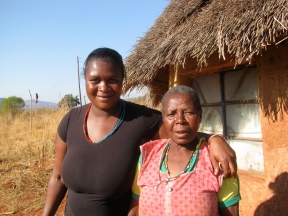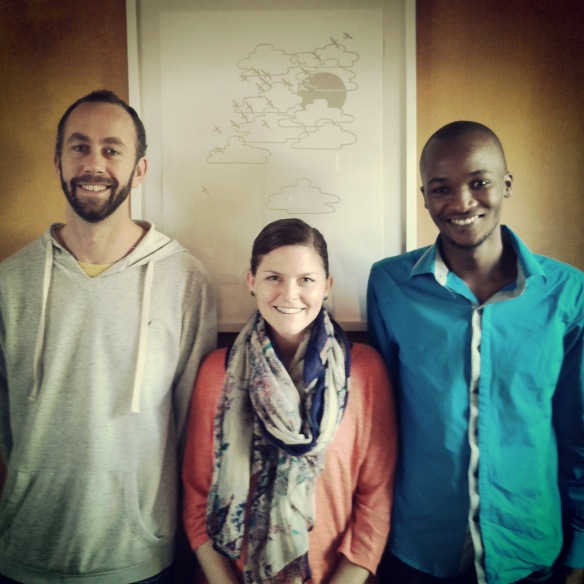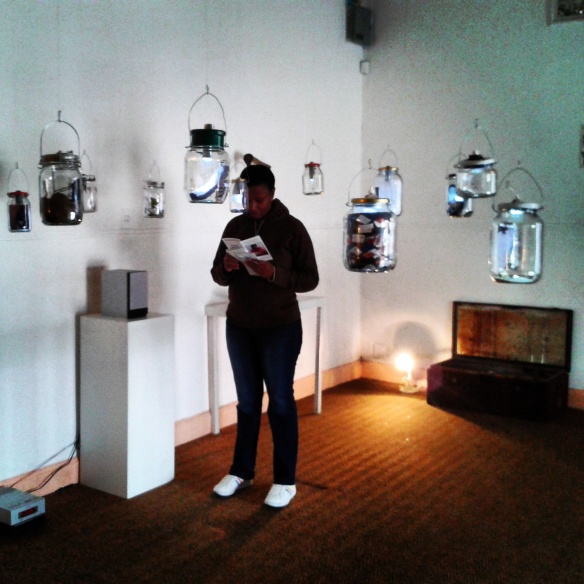Written by Heather Wares
 In Venda mythology, there is a legendary drum, said to have been made powerful by the ‘God’ Mwali, which when sounded before a battle ensured the demise of the enemy. Mwali is said to have been a king who communicated with the people through a high priest. Before speaking, the drum of Mwali would sound releasing its spiritual powers. The legend goes that because of fighting among his subjects, Mwali punished the people by sounding the drum loudly, resulting in the death of many people. With continued strife, eventually Mwali is said to have left to live under the earth. On his leave, a smaller drum with the same name, was given to his son Tshilume and possessed the same magic and killing power of the big drum used by Mwali himself.[1]
In Venda mythology, there is a legendary drum, said to have been made powerful by the ‘God’ Mwali, which when sounded before a battle ensured the demise of the enemy. Mwali is said to have been a king who communicated with the people through a high priest. Before speaking, the drum of Mwali would sound releasing its spiritual powers. The legend goes that because of fighting among his subjects, Mwali punished the people by sounding the drum loudly, resulting in the death of many people. With continued strife, eventually Mwali is said to have left to live under the earth. On his leave, a smaller drum with the same name, was given to his son Tshilume and possessed the same magic and killing power of the big drum used by Mwali himself.[1]
In a time of human migration from North to South, it is this legendary magic and killing power of the drum that continued to surface within oral histories, explaining the force and power that leaders like Dimbanyika had when usurping territory from the Southern chiefdoms. It is also said that the original inhabitants of the country surrendered freely because of the fear instilled by the reputation of the drum for killing many previous communities merely by it being sounded.[2] Any battle lost was attributed to the drum falling to the ground, which was forbidden, or being stolen by rival chiefdoms.
 The story of Dimbanyika and the sacred drum of Mwali illustrate how a historical narrative can be told in various ways. Venda history is complex, encompassing migration, mythology and the importance of deep rooted belief systems in the recounting of this history. It brings to the fore the importance of engaging with communities in a way that allows people to express their own historical narrative in their own way. So often histories are told through the official documentation and from the perspective of those in power at the time it is written. Although official records are useful and often a good starting point for historical research, as I found out with the research for this project, it often silences the voices of the individual community members. One of the objectives of the Lake Fundudzi Management Project was to collect these silenced narratives to better understand how the various villages regarded Lake Fundudzi within their own histories and belief systems. Was it a site of natural beauty, a site of historical importance, a sacred site or merely an important natural resource?
The story of Dimbanyika and the sacred drum of Mwali illustrate how a historical narrative can be told in various ways. Venda history is complex, encompassing migration, mythology and the importance of deep rooted belief systems in the recounting of this history. It brings to the fore the importance of engaging with communities in a way that allows people to express their own historical narrative in their own way. So often histories are told through the official documentation and from the perspective of those in power at the time it is written. Although official records are useful and often a good starting point for historical research, as I found out with the research for this project, it often silences the voices of the individual community members. One of the objectives of the Lake Fundudzi Management Project was to collect these silenced narratives to better understand how the various villages regarded Lake Fundudzi within their own histories and belief systems. Was it a site of natural beauty, a site of historical importance, a sacred site or merely an important natural resource?
The approach to collecting these narratives was a relatively unique one in the case of heritage management strategies. A questionnaire was designed and then circulated in the various villages by practiced field workers. The answers were collated to provide quantifiable statistics which would inform a potential heritage management plan. To pull this off a team of individuals from varied expertise and backgrounds came together. This multi-disciplinary or multi-perspective approach created a platform from which innovative ways of thinking could emerge. As with any innovation, there were challenges which accompanied this approach. With many of the team members not from heritage backgrounds, in order to prepare the team to achieve the best possible outcome, my role as the historian providing a historical context became more central. I saw my role not only as providing an historical context of Venda and Lake Fundudzi but also how the heritage field had been involved. It is with this in mind that I first approached my role as historical researcher for the project.
It was clear from the beginning that there was a logical place to begin my digging, the registry at the South African Heritage Resources Agency (SAHRA). My first encounter with Lake Fundudzi was in 2011 when I started working at SAHRA. One of my first assignments was to assist in the organisation of a public participation workshop in a town close to the Lake. I found myself entering into the last stages of a 15 year process of the declaration of a National Heritage site. My decision to begin with official records soon sparked a second decision, to start from the present and walk my way into the past. Better to start with the familiar with what I soon realised would lead me into a complex history of migration, settlement, and most glaring, conflict over territorial ownership and political leadership.
 Through the public participation workshop I had experienced firsthand, albeit through a translator, the complexities of the issue of ownership surrounding Lake Fundudzi. The SAHRA records painted a similar picture, most interesting were the written objections submitted in the last few weeks of the process, after the official intention to declare Lake Fundudzi a National Heritage Site had been announced. These objections revealed strong opinions of the Lake being a sacred site of the Vhatavhatsindi royal family, a place to perform burial rituals and to communicate with the ancestors. The main argument of these objections was the incompatibility of a heritage site and a sacred site, stating that no sacred site could be a heritage site as it would be disrespectful to the ancestors. This posed many questions for myself and the team: why were these objections only surfacing now after all of the proper processes of public participation and allowances for objections had been followed? Which leaders and communities had been included in the consultation process? How do I better understand the leadership and ownership conflicts of the area? And where do belief systems fit into a historical context?
Through the public participation workshop I had experienced firsthand, albeit through a translator, the complexities of the issue of ownership surrounding Lake Fundudzi. The SAHRA records painted a similar picture, most interesting were the written objections submitted in the last few weeks of the process, after the official intention to declare Lake Fundudzi a National Heritage Site had been announced. These objections revealed strong opinions of the Lake being a sacred site of the Vhatavhatsindi royal family, a place to perform burial rituals and to communicate with the ancestors. The main argument of these objections was the incompatibility of a heritage site and a sacred site, stating that no sacred site could be a heritage site as it would be disrespectful to the ancestors. This posed many questions for myself and the team: why were these objections only surfacing now after all of the proper processes of public participation and allowances for objections had been followed? Which leaders and communities had been included in the consultation process? How do I better understand the leadership and ownership conflicts of the area? And where do belief systems fit into a historical context?
These questions lead me to start looking into the human history of Limpopo in general and Venda more specifically. As I read more, I began to realise just how complex Venda history is. The history was also difficult to follow as it was not presented as a linear history on a timeline. Rather the history was told as a series of significant events and achievements of leaders. It is this which has prompted, too often, the disregard of these historical accounts in official histories as they were deemed unreliable. Another feature of historical narratives, often recounted through the oral tradition, is the intertwining of mythology and history. The story of the drum of Mwali demonstrates this well, with the defeat of the great Dimbanyika explained by the drum falling to the ground. By attributing his defeats to the anger of a God-like power, the legendary power and strength of the leader is kept intact. Without rituals and taboos followed, the magic of the drum was evoked and the power shifted from one leader to another, explaining succession.
 A respect for rituals and taboos seemed to be a constant theme throughout my research. It is here that it is important to point out that at first Lake Fundudzi was nominated as a natural heritage site, and only later as a cultural heritage site. This connecting of environment and culture is an interesting concept, as in other parts of South Africa it is clear that these are often seen as one and the same. When looking into research papers on Limpopo, Venda and Lake Fundudzi, it seemed that the environmental importance of the Lake and other natural environments such as waterfalls and forests started to influence cultural belief systems and the rituals performed. The argument to explain this states that in order to protect the natural resource from degradation, leaders introduced taboos and rituals restricting access or over use. Understanding this connection between nature and culture, gives insight into the strong place cultural belief systems and taboos have in the telling of a history and the governing of a territory.
A respect for rituals and taboos seemed to be a constant theme throughout my research. It is here that it is important to point out that at first Lake Fundudzi was nominated as a natural heritage site, and only later as a cultural heritage site. This connecting of environment and culture is an interesting concept, as in other parts of South Africa it is clear that these are often seen as one and the same. When looking into research papers on Limpopo, Venda and Lake Fundudzi, it seemed that the environmental importance of the Lake and other natural environments such as waterfalls and forests started to influence cultural belief systems and the rituals performed. The argument to explain this states that in order to protect the natural resource from degradation, leaders introduced taboos and rituals restricting access or over use. Understanding this connection between nature and culture, gives insight into the strong place cultural belief systems and taboos have in the telling of a history and the governing of a territory.
The purpose of this short insert has not been to recount these various and conflicting histories, there is simply not enough space to do the history justice. It has been rather to make a comment, through my own experience, on the complexities and importance of historical research in a project such as this one. Although official records are available, I soon realised that even these were limited. In order to give the project team as informed a historical context as possible it was important to delve into the way in which local perspectives were produced. Understanding the way in which a historical narrative through oral history within Venda tradition is recounted, with non-linear timelines, the use of mythology and the interweaving of nature and culture, would best serve the team in the field. In this way they would have better insight into how and why local perspectives are produced. This in turn would help the team design an effective research tool in the way of a questionnaire which could result in deeper and possibly more accurate data. Of course I had no way of knowing if this would be the case or if I had taken the correct approach. As I handed my written historical context over and met with the various team members to talk them through my research, I hoped I had sufficiently prepared them.
[1] A.G. Schutte. Mwali in Venda, 112.
[2] A.G. Schutte. Mwali in Venda, 113.










![IMG_20141030_105436[1]](https://underwaterheritage.files.wordpress.com/2014/10/img_20141030_1054361.jpg?w=584&h=584)















![IMG_20140725_142927[1]](https://underwaterheritage.files.wordpress.com/2014/07/img_20140725_1429271.jpg?w=584&h=584)









